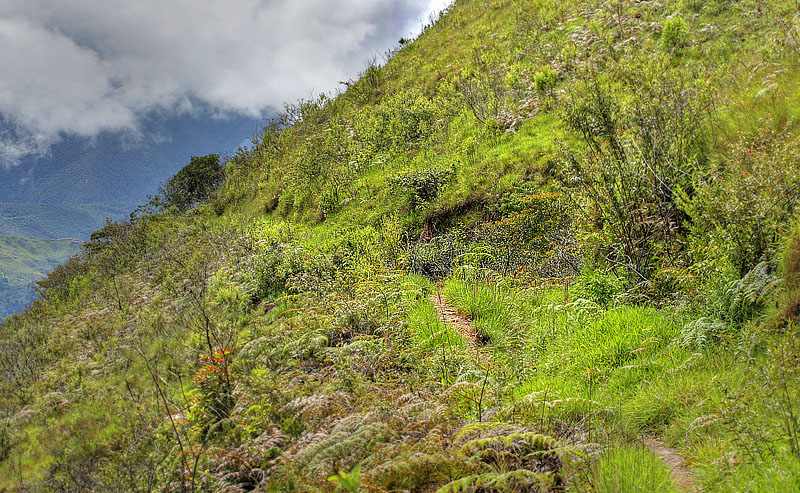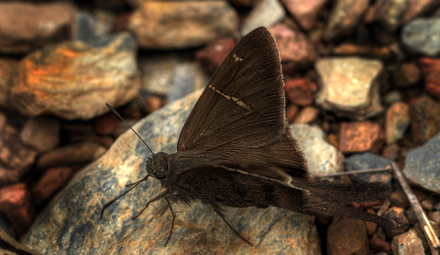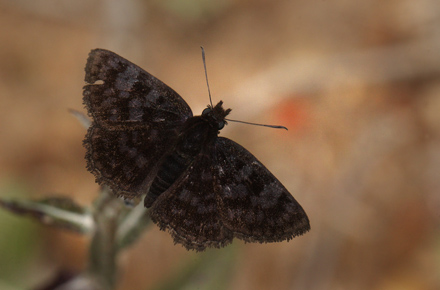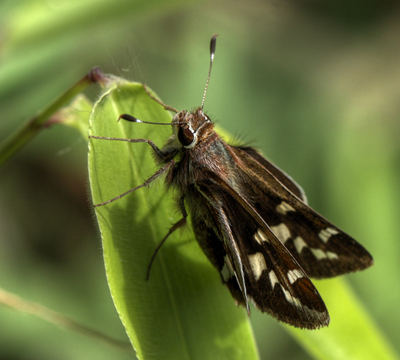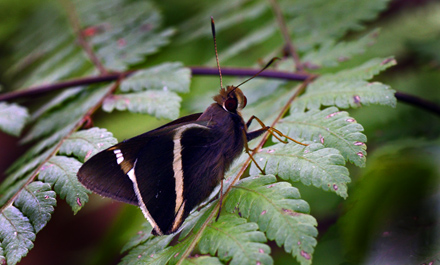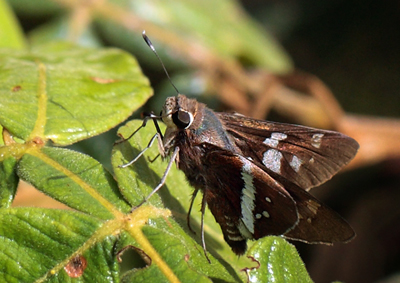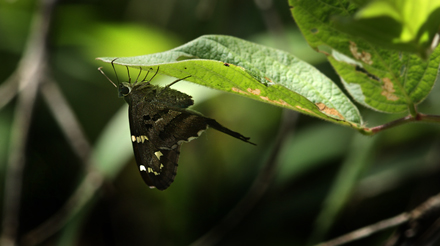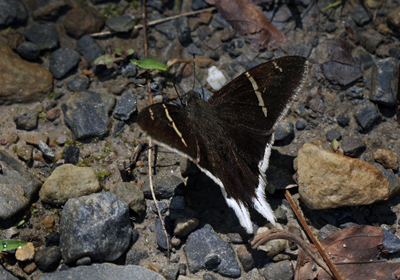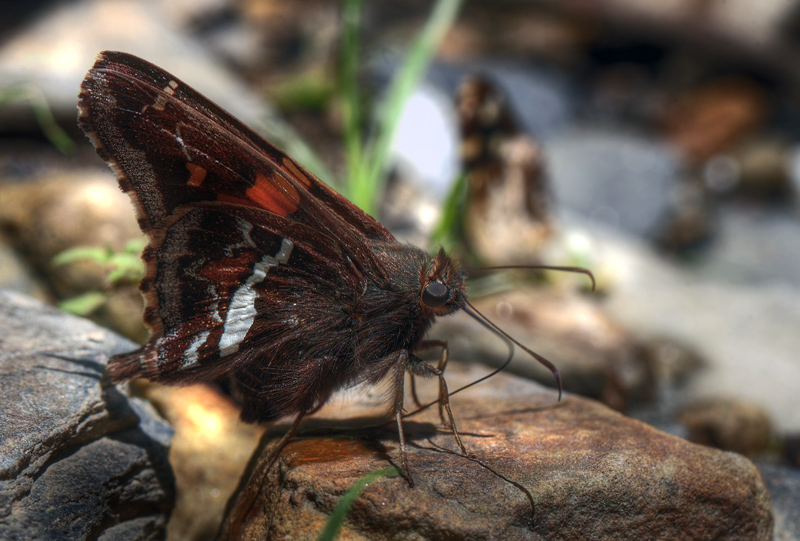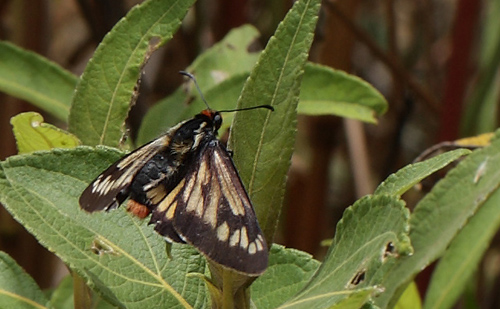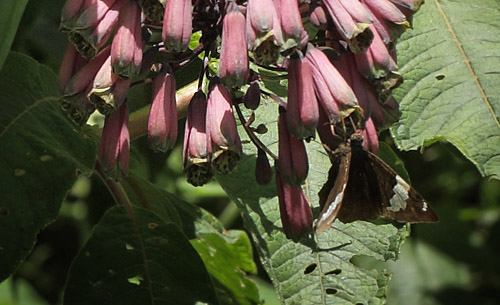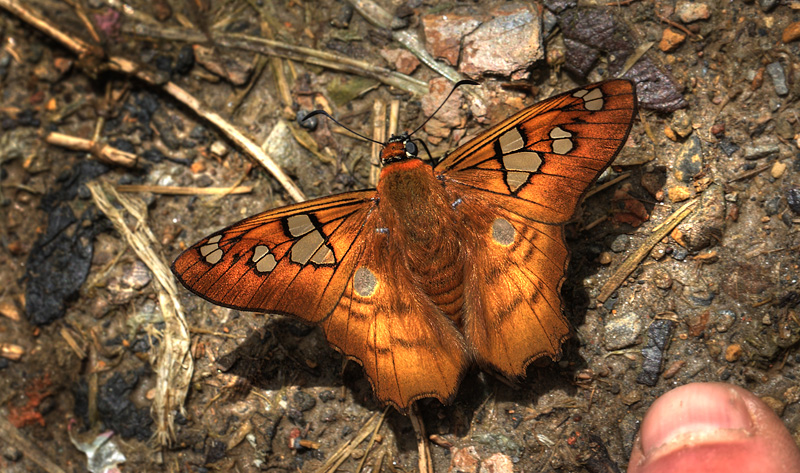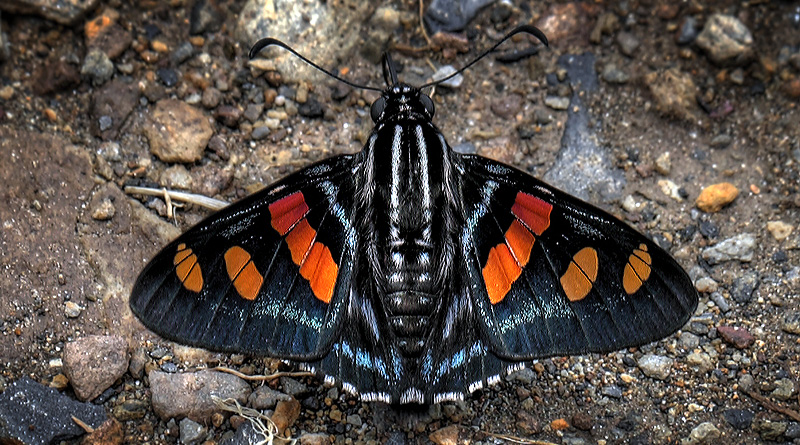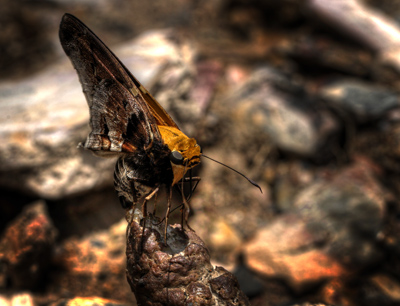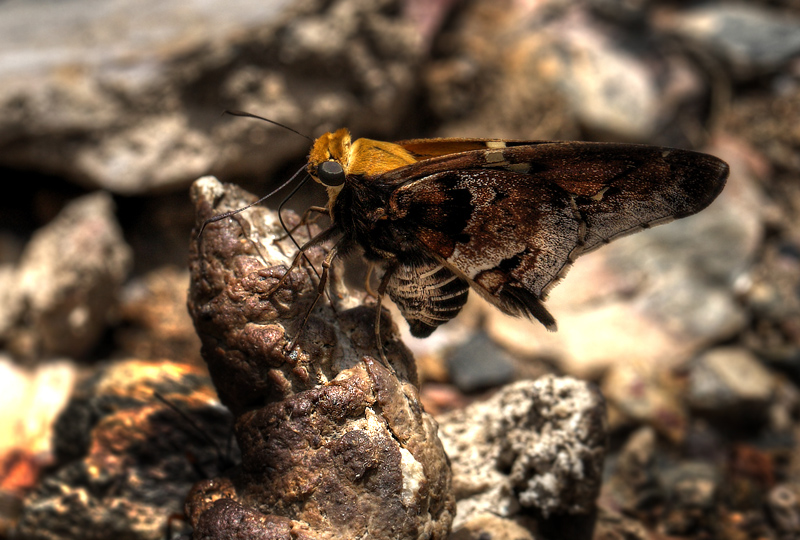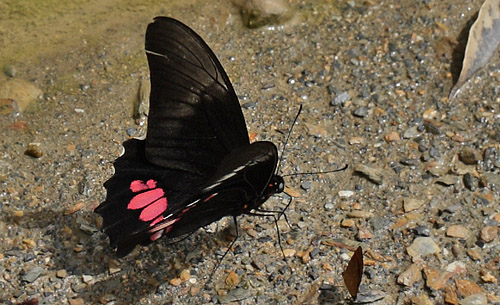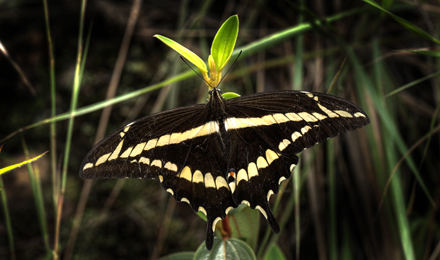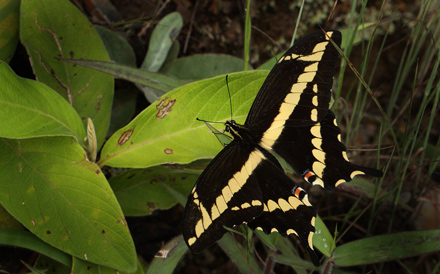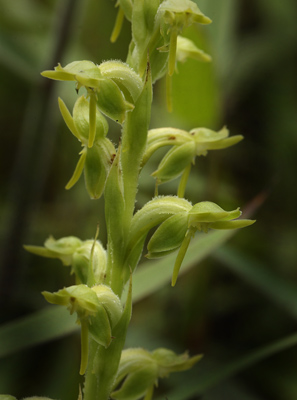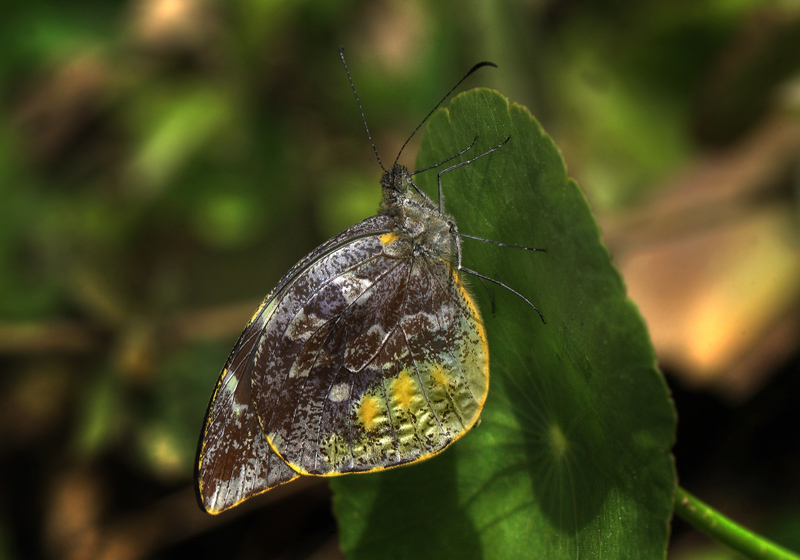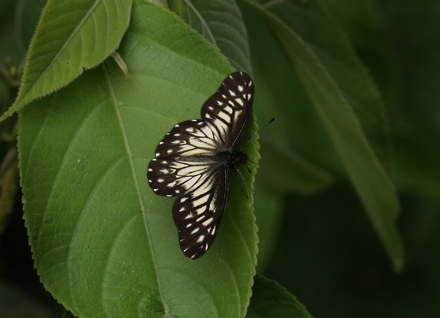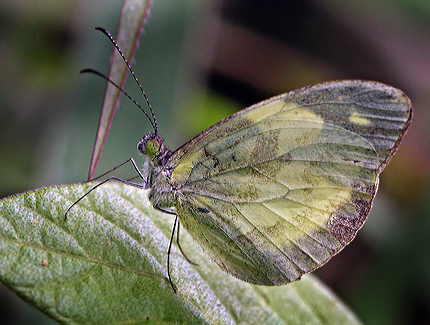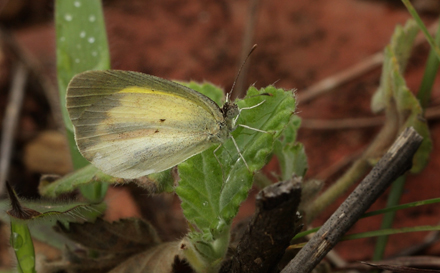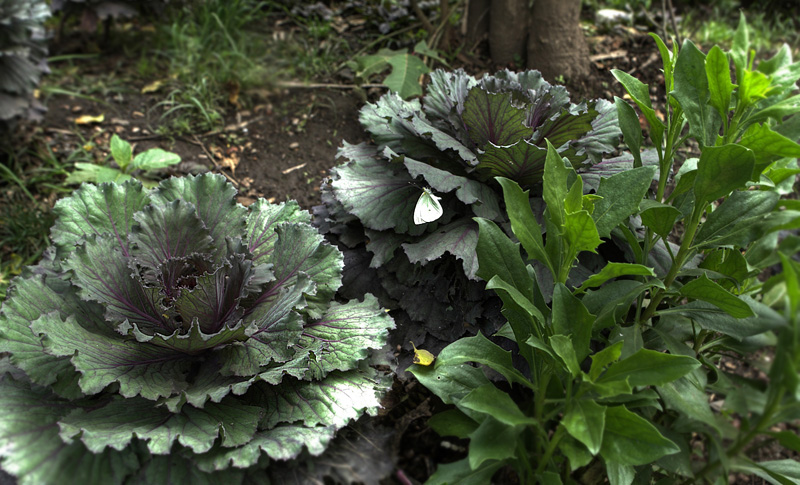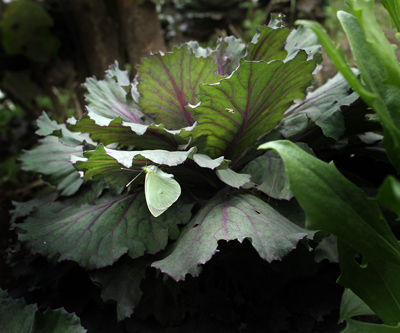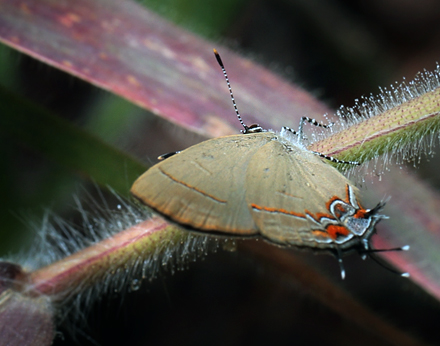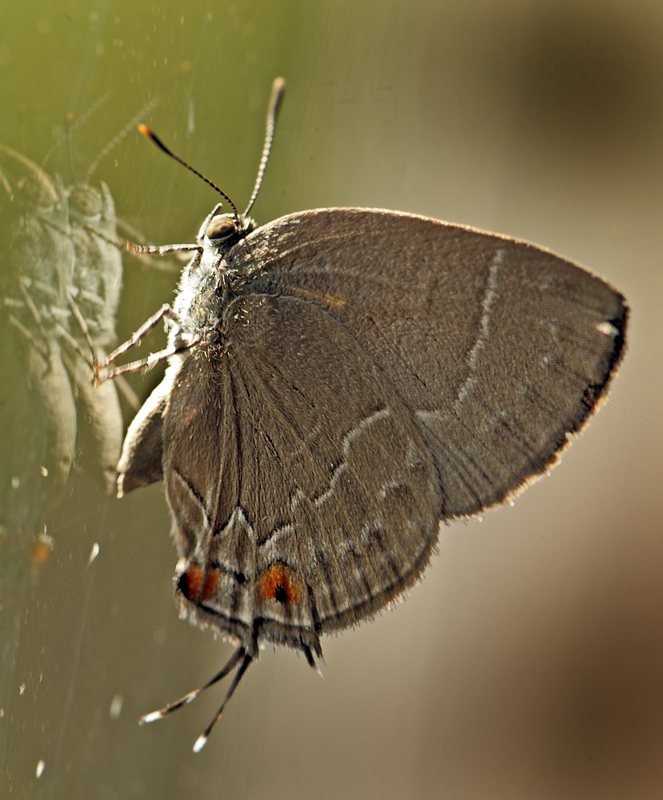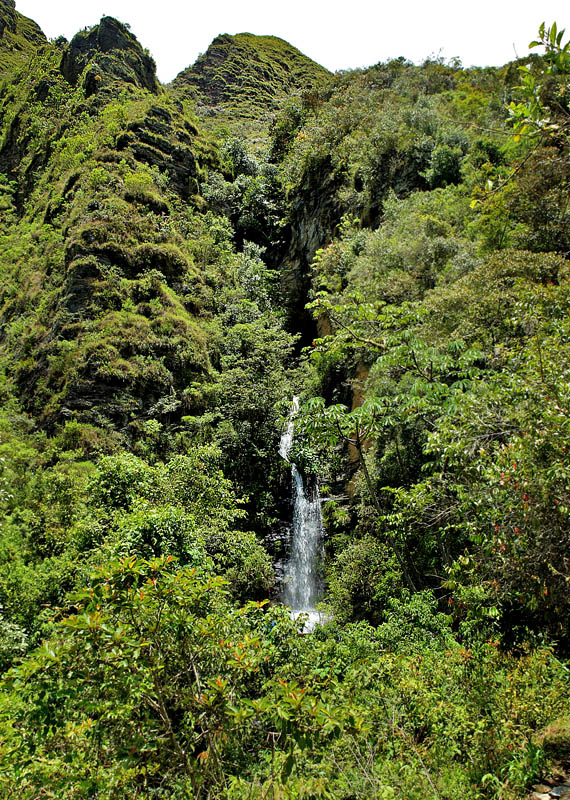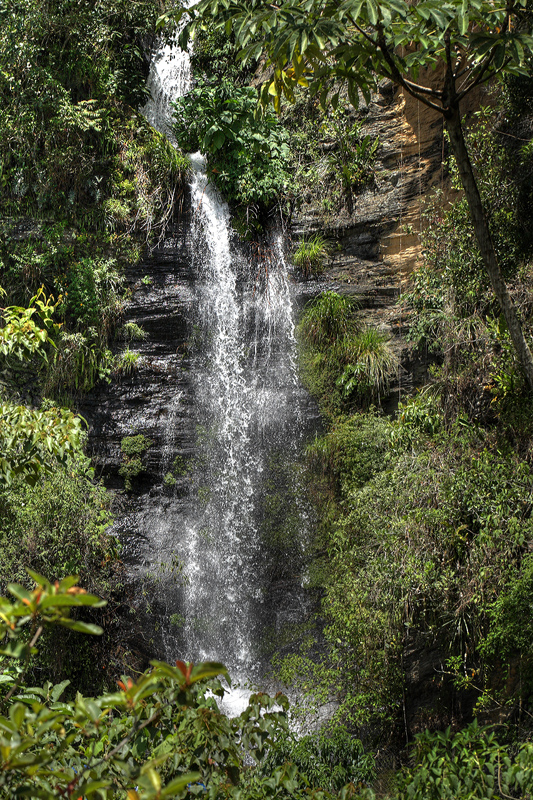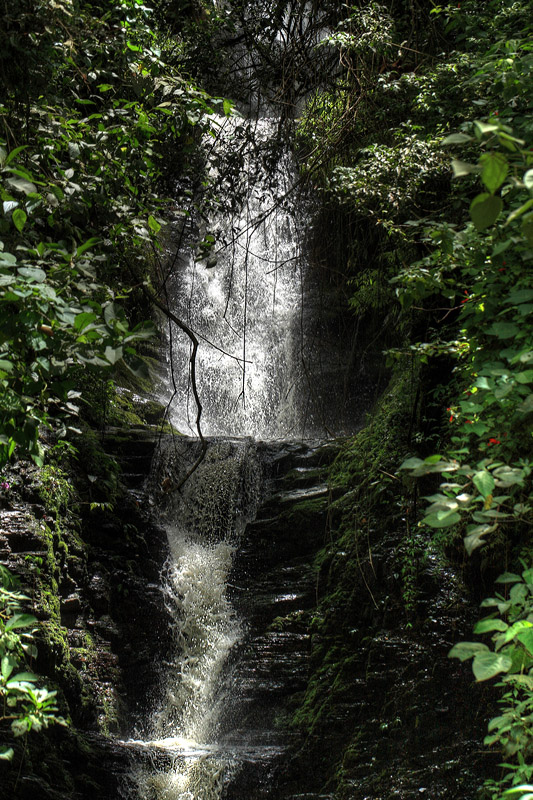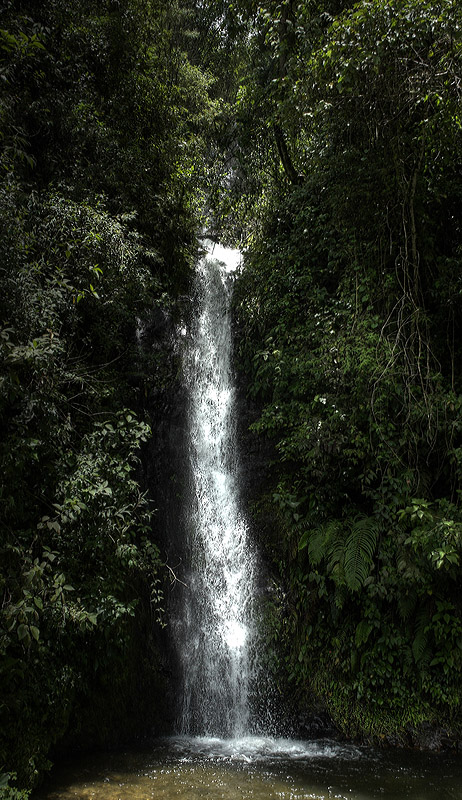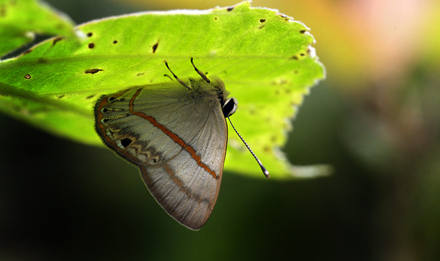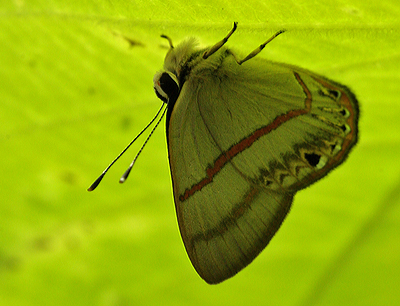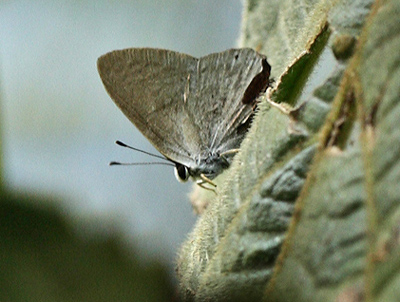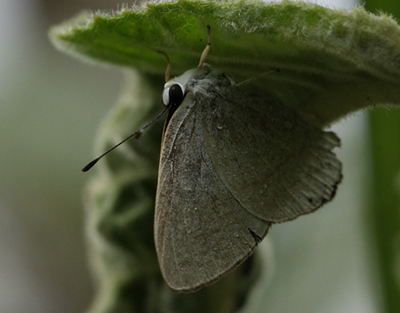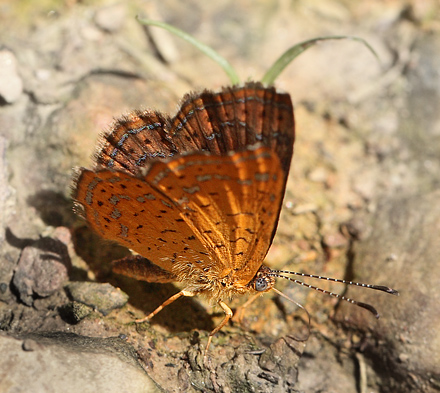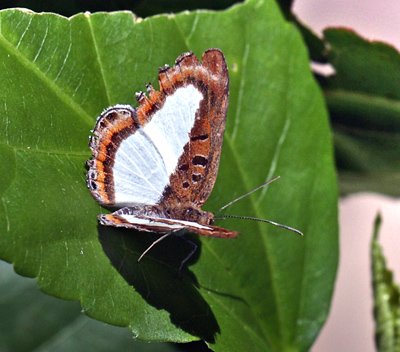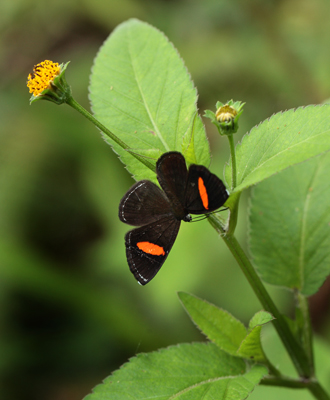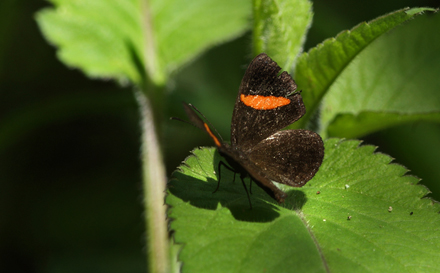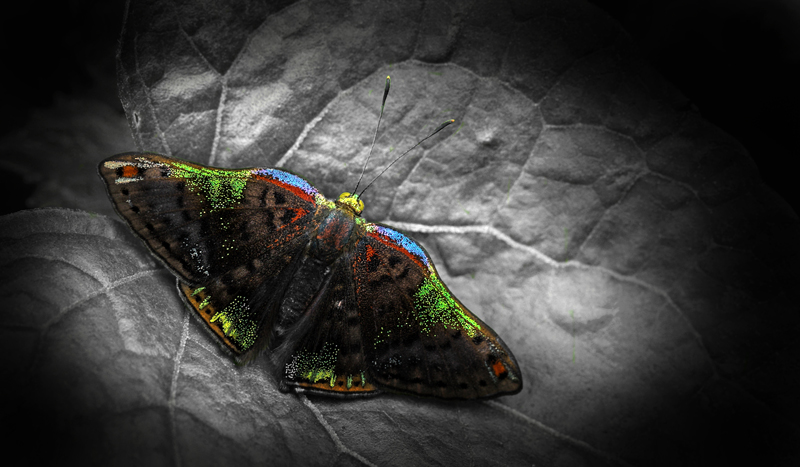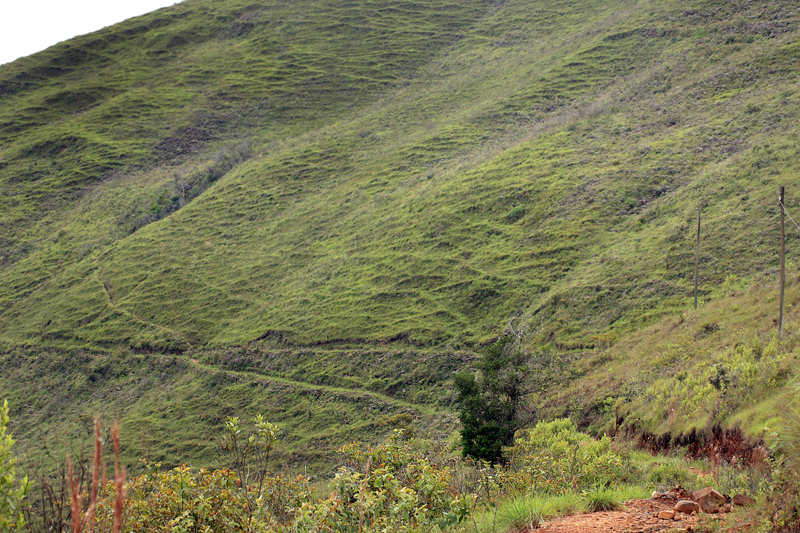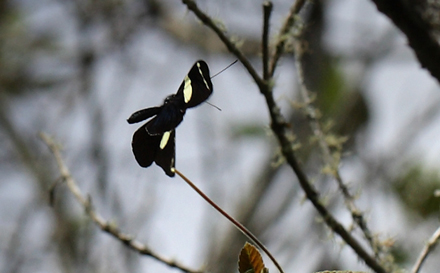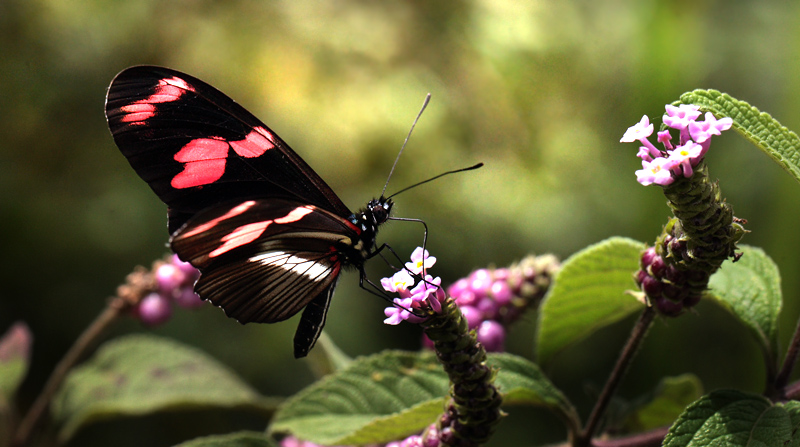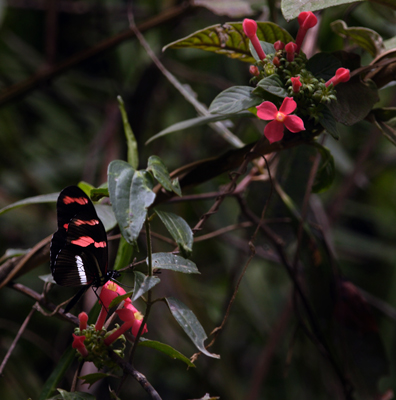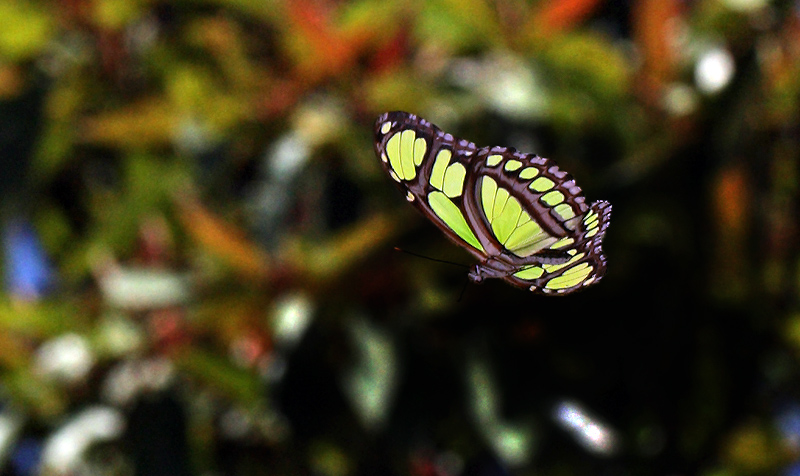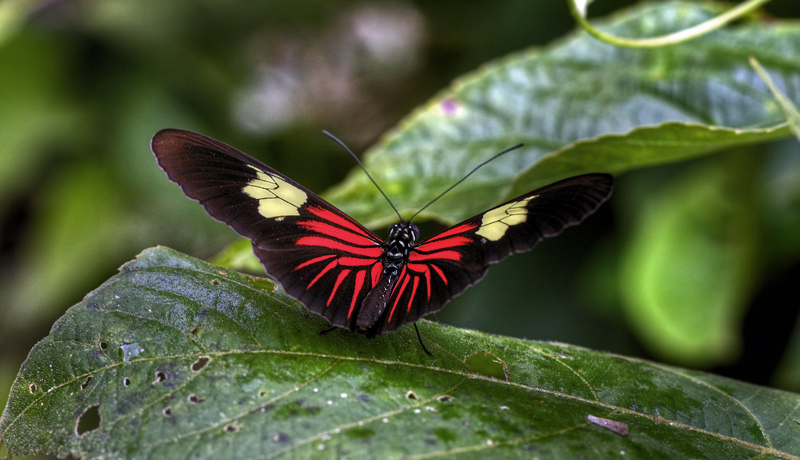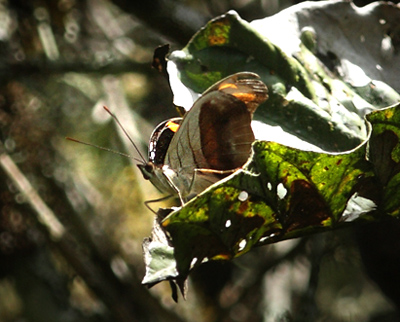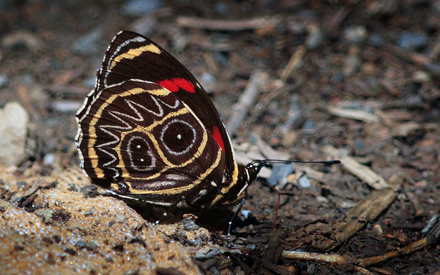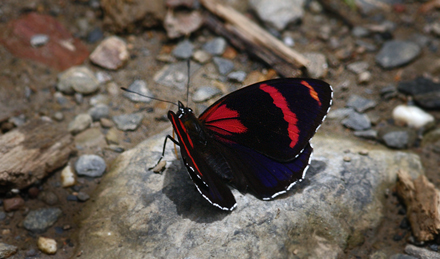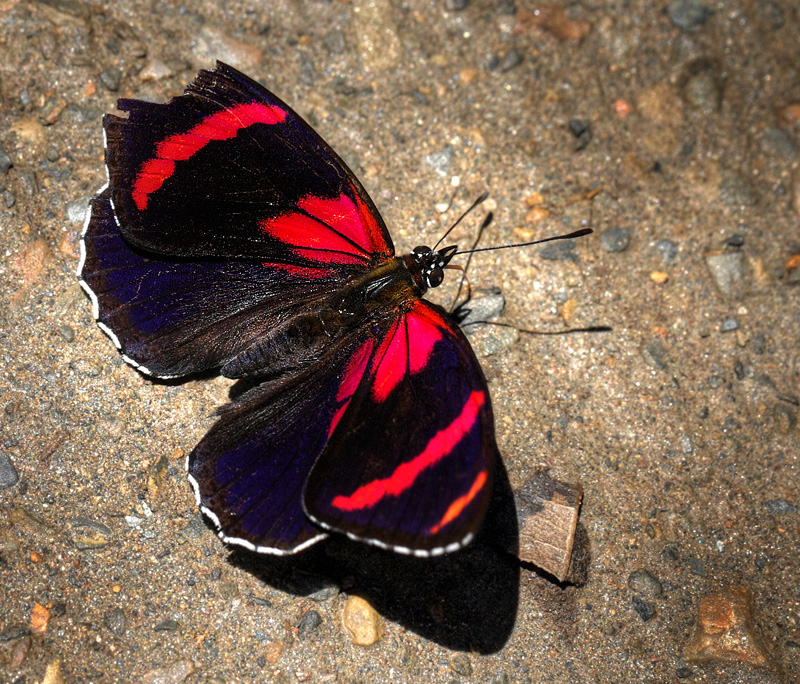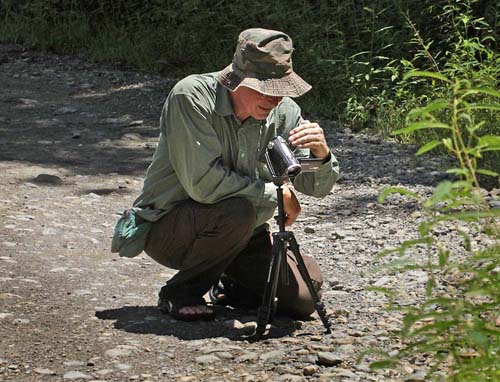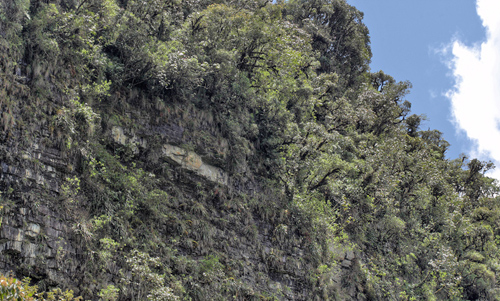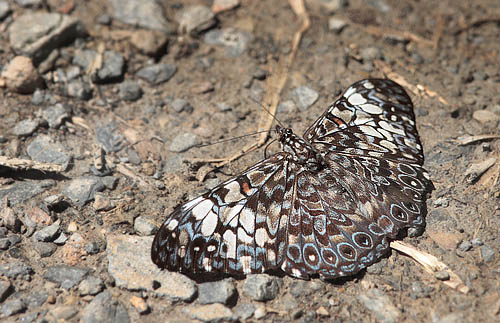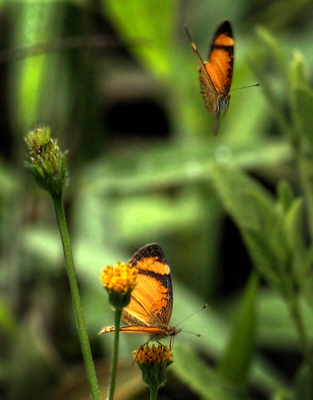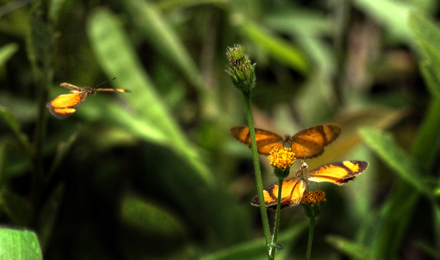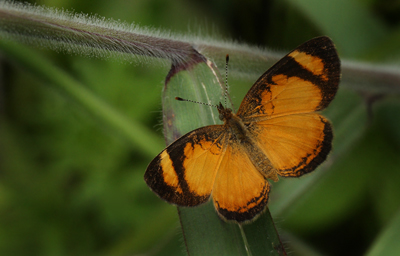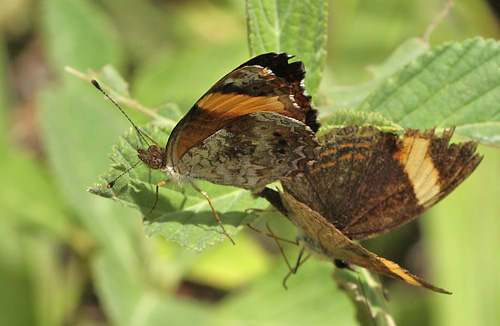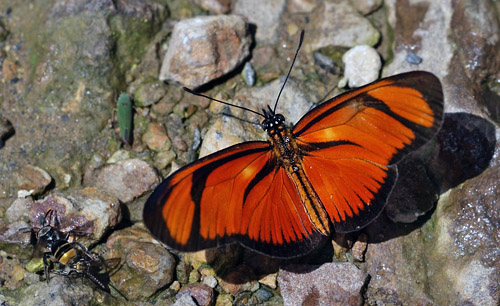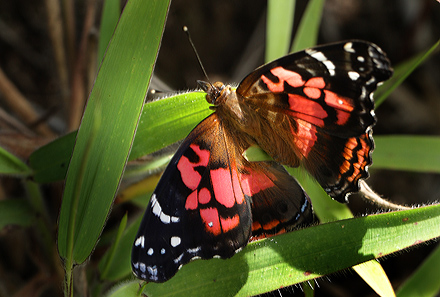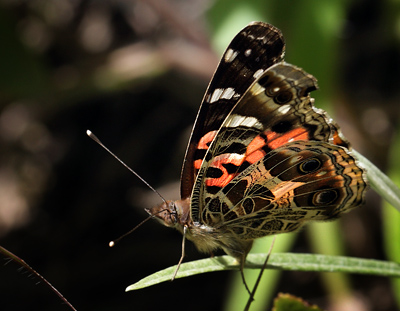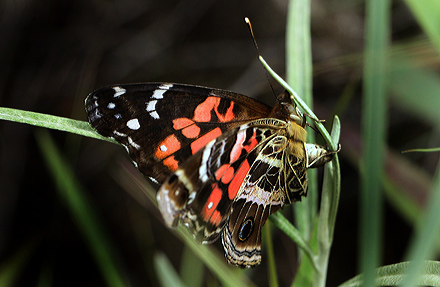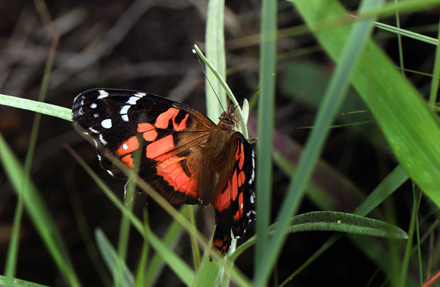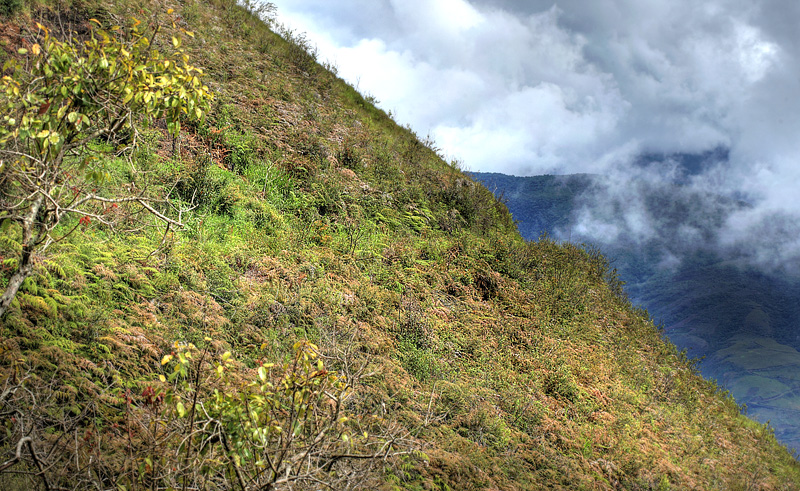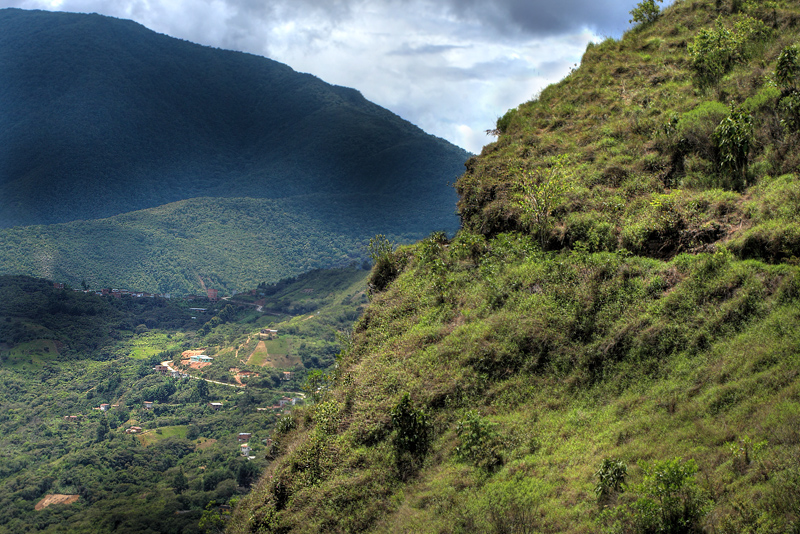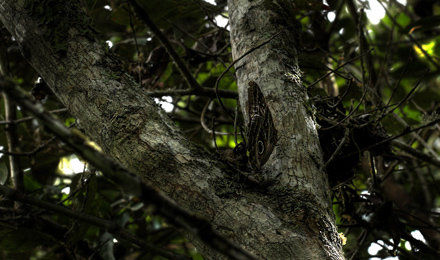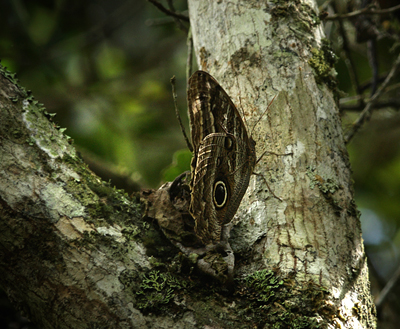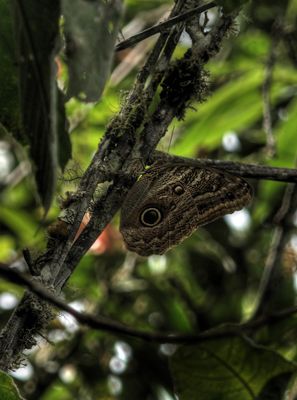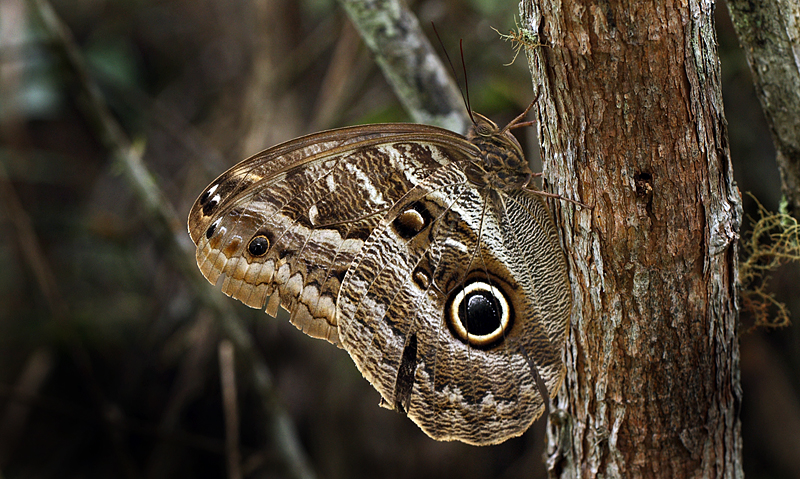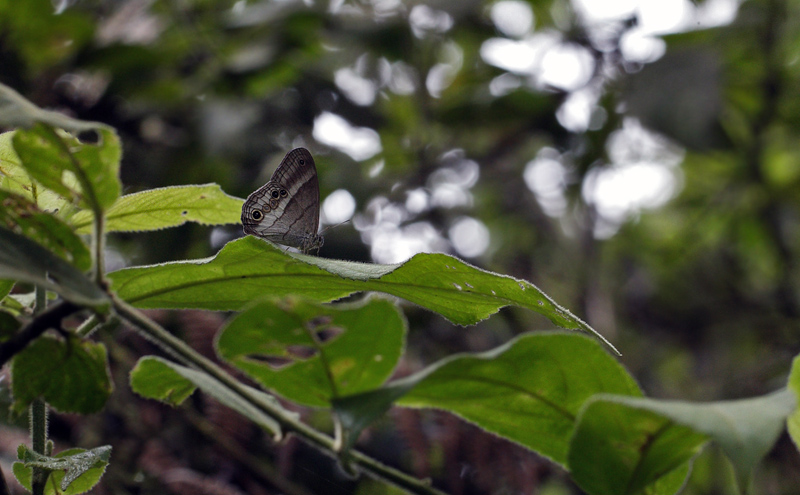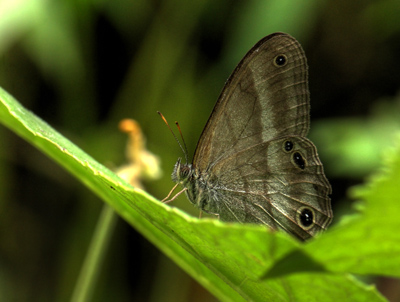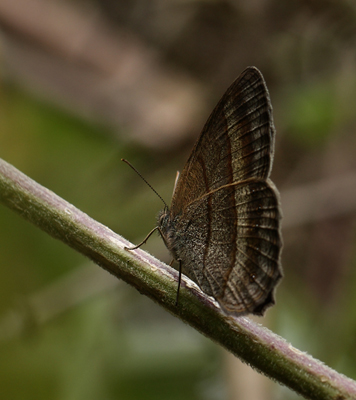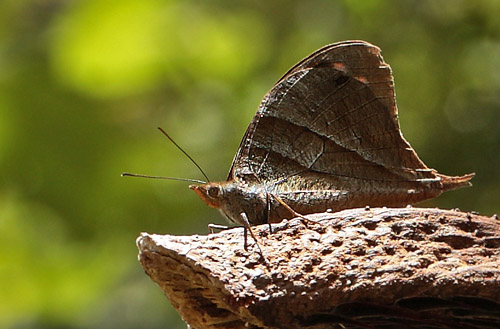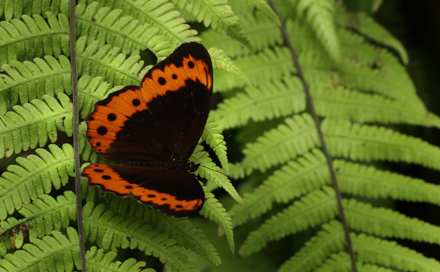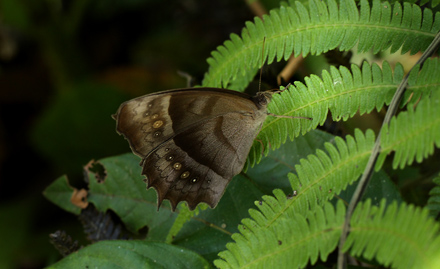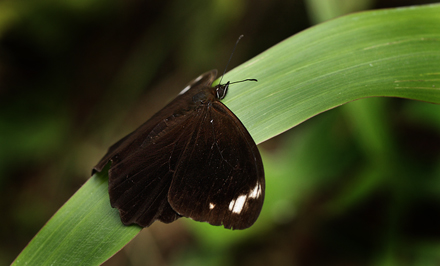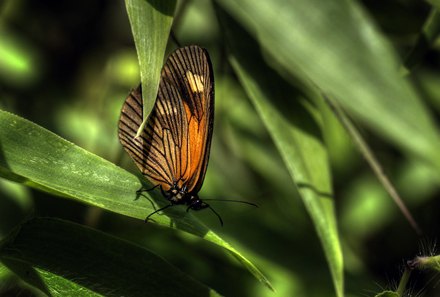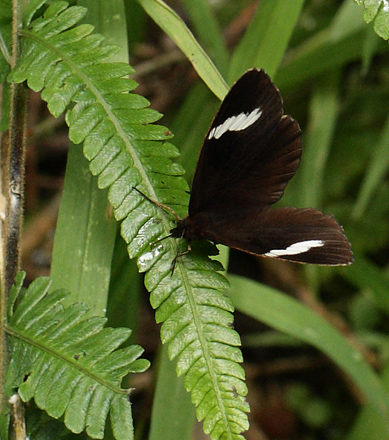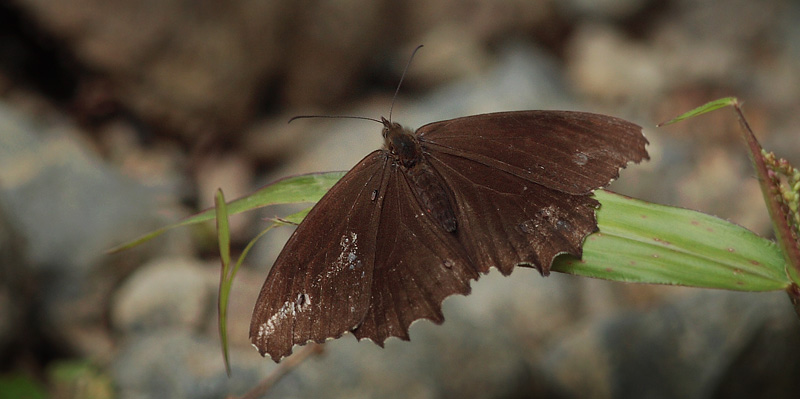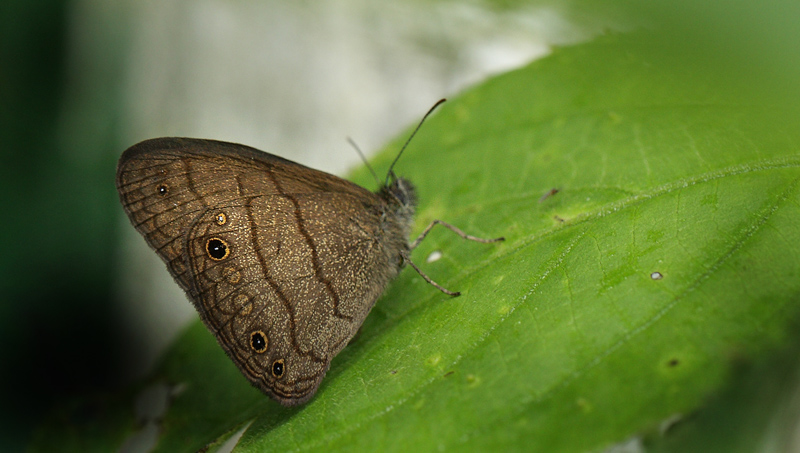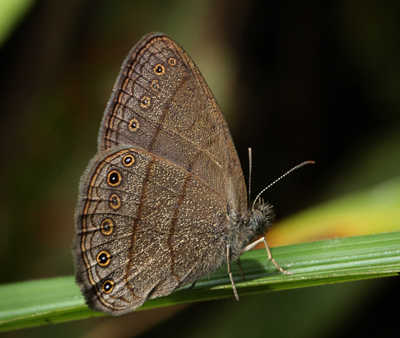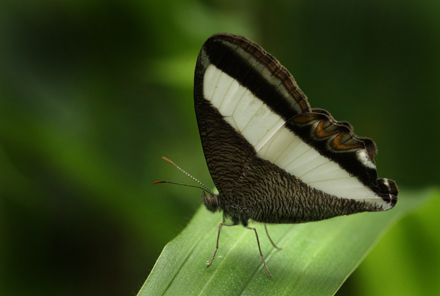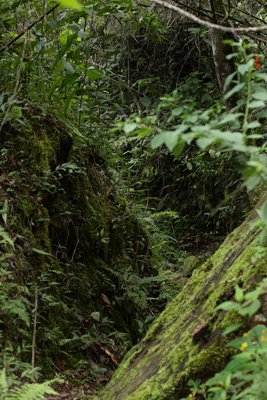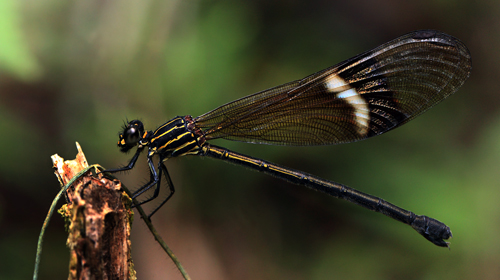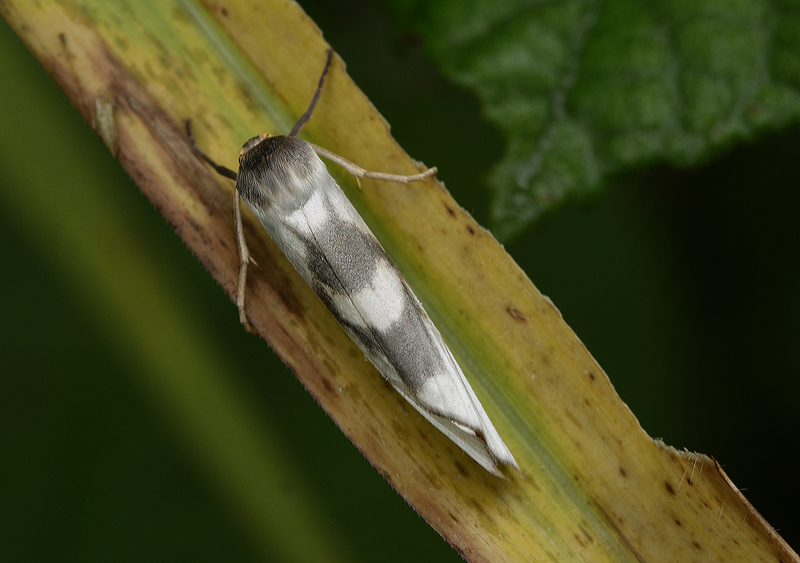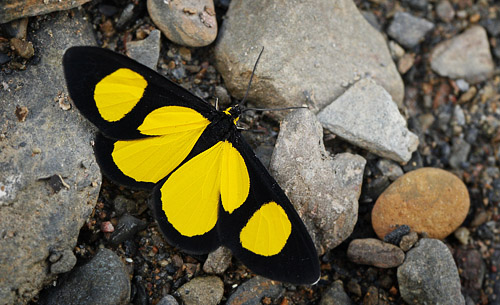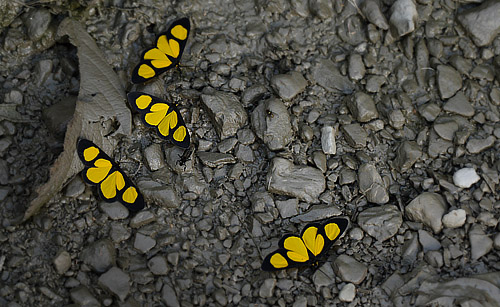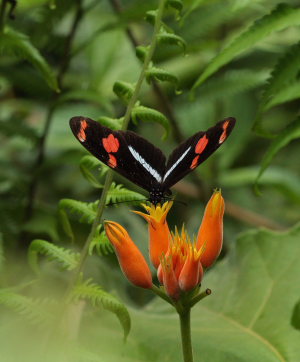MARIPOSAS de BOLIVIA
Enero - Febrero 2012
first update d. 24 January 2012
Last update d. 12 January 2022
Redactor: Lars Andersen
_______________________________________
Butterflies from
Coroico valley, Yungas, elev. 1700 m.
Enero - Febrero 2012 sitio 72
Coroico valley, Yungas, elev. 1700 m. Grass plains on the north side of the mountain Uchumachi (2698m.), one can easily walk to the hotel Esmeralda (1820 m) of the Inca trails that go to the Cascades de San Juan (1910m.), the trip takes 2 hours of time when you pass through several small ravines. On the grassfield (Punaen), few species butterflies that can handle the sun at midday. Once you reach the small ravines are immediately more species butterflies. Below the ravines of San Juan in between Cruz Lomas (1725m.) and San Feliz (1732m.) against Carapata are several ravines there is room to visit. One can also from the plaza in Coroico take a taxi to Rio Vagantes (1130m.) Where on the sandy banks along the river can be seen more exciting butterflies species. Similar ravine sites exist in Yolosa and Puente de Tocana. _______________________________________ |
Coroico dalen, Yungas, elev. 1700 m. Græsskråningen på nordsiden af bjerget Uchumachi (2698m.) kan man nemt gå til fra hotel Esmeralda (1820 m.) af inca stier der går til Cascades de San Juan (1910m.) turen tager 2 timers tid hvor man kommer igennem flere små raviner. På græsskråningen (Punaen) er der få arter dagsommerfugle der kan klare middagsheden. Så snart man når til de små raviner er der straks flere arter dagsommerfugle. Neden for vandfaldene ved San Juan i mellem Cruz Lomas (1725m.) og San Feliz (1732m.) mod Carapata er der flere raviner der er vær at besøge. Man kan også fra Plazaen i Coroico tage en taxa til Rio Vagantes (1130m.) Hvor på sandbanker langs vandløbet kan ses flere spændende dagsommerfugle arter. Lignende ravine lokaliteter findes der i Yolosa og Puente de Tocana. |
| Zigzag
Numberwing or Sorana Eighty-eight, Callicore
sorana ssp. horstii (Mengel, 1916. Coroico valley to Yolosa 18/19th january 2012. Photographer; Lars Andersen There are about 10 species of the
genus Numberwings, Callicore in Bolivia, all of which bear
distinctive and graphic patterns on the underside
hindwings, often resembling numbers or letters of
the alfabet. The uppersides of al species are
black and red/orange bands, some of then with
reflective briliant blue sheen. |
Yolosa, Yungas, elev. 1200 m. 18th January 2012. Photographer; Lars Andersen
Yellow Crackers, Hamadryas fornax. Yolosa, Yungas, elev. 1200 m. 18th January 2012. Photographer; Lars Andersen
Crackers, Hamadryas There are 20 members of Crackers, Hamadryas, Biblidinae. Most are found only in Central and South America, although 8 Crackers have been recorded sporadically in the southern USA. The butterflies are commonly known as Crackers due to the ability of the males of several species to produce a sound similar to the crackling of bacon in a frying pan. The sound is produced as the butterflies take off, and is made by twanging a pair of spiny rods at the tip of the abdomen against bristles on the anal claspers. Only males can produce the sound, but both sexes can detect it - their wings have tiny hollow cells covered in membranes that vibrate in response to sound, and stimulate nerve endings. The purpose of the sound is not known. It may possibly deter competing males from occupying the same territory, or could act as a trigger to initiate the first response from a female during courtship. ________________________________ Der findes 20 arter i Hamadryas, Biblidinae kendt som Crackers. Som findes i Central- og Sydamerika, hvor 8 arter er registreret sporadisk i det sydlige USA. Sommerfuglene er almindeligt kendt som crackers skyldes at hannerne af flere arter frembringer en lyd svarende til den knitrende lyd af bacon på en stegepande som de laver når de letter. Lyden som hannen laver, produceres af nogle hårde pigge på enden af bagkrop underside mod børstehårene på de anale claspers som er et par gribeled som bruges under parring. Kun hanner kan producere lyden, men begge køn kan optage det - deres vinger har bittesmå hule celler dækket i membraner, der vibrerer som reaktion på lyde, og stimulere nerveender. Formålet med lyden er ikke kendt. Det kan muligvis afskrække konkurrerende hanner fra at besætte hans territorium, eller kan fungere som en udløser hos hun til første reaktion under frieri. |
Satyrini |
(Taygetis species) |
(Hermeuptychia cucullina) |
| Hermes Satyr (Hermeuptychia hermes) |
Sorata Satyr (Oressinoma sorata) |
Similis Satyr (Cissia similis or Cissia species?) |
Acraeida Satyr (Lymanapoda acraeida) |
Albomaculata Satyr (Lymanapoda albomaculata) |
Ferruginosa Satyr (Lymanapoda ferruginosa) |
Pronax Satyr (Oxeoschistus pronax) |
Unifasciata Satyr (Pronophila unifasciata) |
Selva Satyr (Steremnia selva) |
| Hermeuptychia cucullina (Weymer, 1911) And the similary species Hermeuptychia hermes (Fabricius, 1775) are probably the most common butterflies in the Andes eastern slopes from 1000 meters up to 2000 meters. Found on mountain grassland in Bolivia. |
| Typhla Satyr, Oressinoma typhla (Doubleday, 1849) breeds in pre-montane rainforest and cloudforest habitats on both sides of the Andes at elevations of between about 900 to 2000 metres. The are two similar species in Oressinoma; typhla above, which is found from Costa Rica to Bolivia, and sorata above right. | Sorata Satyr, Oressinoma sorata (Salvin & Godman, 1868) is local widespread in Yungas, which seems near streams in forested mountain slopes, or in swampy areas where larvae host plant grows; Sedges, Cyperaceae species call Nutgrass. Males acting individually a 2 to 3. along streams and trails, flying in misty and cloudy weather, go to rest when the sun is too strong. Its habitats in Bolivia are about. 900-2200 meters. The spread is limited to southern Peru and Yungas in Bolivia. |
Coroico Valley, Yungas, Sitio 70
Enero - Febrero 2012
| From Coroico you can drive north on the road in
Coroico valley on to Caranavi, the highlands around Caranavi or to Guarnay or Rurrenabaque which is the
gateway to Amazonas great river system. From
Rurrenabaque you can go on trips to the jungle
nearby "Madidi National Park" or the
“Pampas” east of the town which is the
most famous tourist attraction. East direction go
to Coripata and Chulemani. West go to Suapi and
Santa Rosa de Quilo Quilo. And last south, you
can drive on the death road over Cumbre to La Paz. On the death road you
wil come to ”Cascades
de Sacramento Alto”. Lars Andersen d. 22 february 2012. Copenhagen, Denmark. |
Fra Coroico kan man køre videre igennem Coroico dalen mod nord til Caranavi, Guarnay eller Rurrenabaque som er porten til Amazonas store flodsystem. Fra Rurrenabaque kan man tage på ture til junglen i nærheden "Madidi Nationalpark" eller Pampas/Jungle savannaen øst for byen som er de mest kendte udflugtsmål. Mod Mod vest kan man komme til Suapi og Santa Rosa de Quilo Quilo. Mod syd kører man fra Yolosita til La Paz af en ny motorvej som åbnede i slutningen af 2006, og den gamle Yungas Road anvendes nu primært til cyklister på mtb downhill. Denne bjergtur på mtb som starter oppe fra Cumbre i 4650 m.h. Og ender i Yolosa i 1190 m.h. kaldes også "the Death Road". Langs med vejen i 2600 m.h. Ligger de kendte vandfald ”Cascades de Sacramento Alto” og nogle andre spændende raviner hvor jeg flere gange har fotograferet sommerfugle. Lars Andersen d. 22 februar 2012. København, Danmark. |
_______________________________________
The world's most dangerous insect
Bullet Ant, Paraponera clavata
Bullet Ant, Paraponera clavata. Suapi 1400 m.h. d. 7 February 2012. Photographer; Lars Andersen
Bullet Ant, Paraponera clavata is a species of ant named after its most powerful and potent sting in the world! It inhabits humid lowland rainforest to mountain rainforest from Nicaragua to Paraguay in America. The bullet ant is called "hormiga veinticuatro" by the locals, referring to the 24 hours of burning pain that follow after being stung. The pain is indescribable, the nerves become paralyzed as one arm hanging slack down for over a day, so you think you lose your arm? I have tried in Coroico, Bolivia back in January 2005, a pain I never forget! And I have the following year in Bolivia, entered into a Bullet Ant sticking me in the ankle, so I immediately writhed myself around in pain afterwards, so it is becoming crazy! You must have had a good physical strength to endure this pain, children and elderly people can actually die after being stung by this devil.
Bullet Ant gloves on YouTube Could You Pass the Bullet Ant Test? Top 5 Most painful Insects Bites on Youtube |
_______________________________________
Wasp Moths, Tribe Ctenuchini
Rothschild's Wasp Mimic, Cosmosoma ockendeni and unknow Wasp Moths species? (Tribe Ctenuchini). Coroico, Yungas, Bolivia january & february 2012. Photographer; Lars Andersen
_______________________________________
Linnaeus's Joker, Cyllopoda
jatropharia(Linnaeus,
1758).
Yolosa, Coroico, Yungas, Bolivia January 18, 2012. Photographer; Lars Andersen
_______________________________________
Home tilbage til forsiden
_______________________________________
dont use this pictures without permission from:
photographer © Lars Andersen
_______________________________________
Mariposas de Bolivia
Enero 2010
por Peter Møllmann y Lars Andersen
_______________________________________
Mariposas de Bolivia
Enero - Febrero 2009
por Peter Møllmann y Lars Andersen
_______________________________________
Mariposas de Bolivia
Enero - Febrero 2008
por Peter Møllmann y Lars Andersen
_______________________________________
Mariposas de Bolivia
Enero 2007
por Peter Møllmann y Lars Andersen
_______________________________________
Mariposas de Bolivia
Enero 2006
por Peter Møllmann y Lars Andersen
_______________________________________
Home tilbage til forsiden
